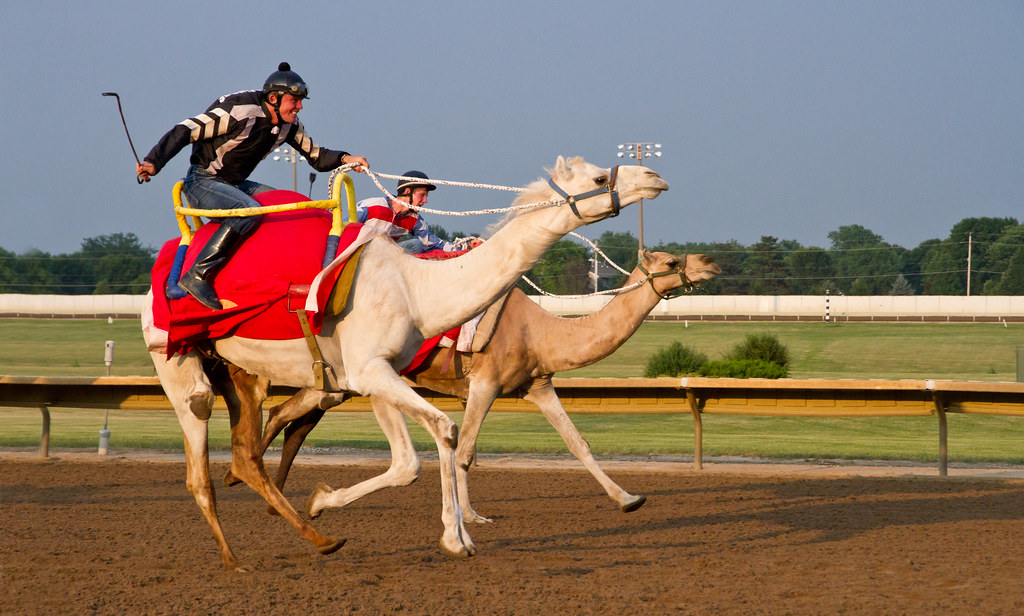How Fast Can a Camel Run?
Camels, often referred to as the “ships of the desert,” are remarkable animals known for their endurance and ability to traverse harsh desert environments. While they are not typically recognized for their speed, camels can run surprisingly fast when necessary. This article will explore how fast camels can run, the factors affecting their speed, their adaptations for running, and the cultural significance of camels in various regions.
Overview of Camel Speed
Camels can reach impressive speeds, especially when sprinting. The average speed of a camel can be broken down into two categories: sprinting speed and sustained speed.
- Sprinting Speed: Camels can reach speeds of up to 65 km/h (40 mph) in short bursts. This speed is comparable to that of many other large animals and is particularly useful for evading predators or during racing events.
- Sustained Speed: Over longer distances, camels can maintain a speed of about 40 km/h (25 mph) for an hour. This endurance is one of the reasons camels are so well-suited for long journeys across deserts.
Factors Affecting Camel Speed
Several factors influence how fast a camel can run, including:
- Age: Younger camels tend to be faster than older ones. As camels age, their speed and stamina may decrease.
- Health: A healthy camel will perform better than one that is sick or injured. Proper nutrition and care are essential for maintaining a camel’s speed.
- Training: Like any athlete, camels that are trained for racing or endurance will perform better than those that are not. Training can improve both speed and stamina.
- Weight: Heavier camels may struggle to reach their top speeds, while lighter camels can sprint more effectively.
- Terrain: The type of ground on which a camel is running can also affect its speed. Soft sand may slow a camel down, while harder surfaces allow for faster running.
Adaptations for Speed
Camels possess several adaptations that enable them to run efficiently in desert environments:
- Long Legs: Camels have long legs that allow them to cover more ground with each stride, contributing to their speed.
- Unique Feet: Their broad, padded feet are designed to prevent sinking into the sand, allowing for better traction and speed on soft surfaces.
- Efficient Respiratory System: Camels have a highly efficient respiratory system that allows them to take in more oxygen during intense physical activity, supporting their speed and endurance.
- Body Temperature Regulation: Camels can tolerate high body temperatures, which helps them avoid overheating during long runs in the desert sun.
Cultural Significance of Camels
Camels have played a vital role in the cultures of many regions, particularly in the Middle East, North Africa, and parts of Asia. Their speed and endurance have made them invaluable for transportation, trade, and racing.
Camel Racing
Camel racing is a popular sport in several countries, particularly in the Gulf states. Races can attract significant crowds and are often accompanied by festivities. Here are some key points about camel racing:
- Racing Speeds: In racing conditions, camels can reach their top speeds of up to 65 km/h.
- Jockeys: Traditionally, child jockeys were used due to their lightweight, but this practice has faced criticism and legal restrictions in many countries. Today, robotic jockeys are often used.
- Cultural Events: Major camel racing events are held annually, drawing participants and spectators from around the world. These events celebrate the heritage and skills associated with camel breeding and training.
Comparison with Other Animals
When considering the speed of camels, it is interesting to compare them to other animals:
| Animal | Top Speed (km/h) | Top Speed (mph) |
|---|---|---|
| Camel | 65 | 40 |
| Horse | 70 | 43 |
| Zebra | 65 | 40 |
| Donkey | 48 | 30 |
| Human (Sprint) | 37 | 23 |
Conclusion
Camels are fascinating animals with remarkable adaptations that allow them to run at impressive speeds. While they are not the fastest animals in the world, their ability to maintain speed over long distances makes them uniquely suited for life in the desert. Understanding the speed of camels and their cultural significance enhances our appreciation of these incredible creatures.
FAQ Section
- How fast can a camel run?
- Camels can run at speeds of up to 65 km/h (40 mph) in short sprints and maintain a speed of about 40 km/h (25 mph) for an hour.
- What factors affect a camel’s speed?
- Factors include age, health, training, weight, and terrain.
- Are camels used for racing?
- Yes, camel racing is a popular sport in many regions, especially in the Middle East and North Africa.
- What adaptations do camels have for speed?
- Camels have long legs, unique feet, an efficient respiratory system, and the ability to regulate body temperature.
- How does camel speed compare to other animals?
- Camels have comparable speeds to zebras and can run nearly as fast as horses.
- What is the significance of camel racing?
- Camel racing is a cultural event that celebrates heritage, breeding, and training skills, often accompanied by festivities.
- Can camels be trained to run faster?
- Yes, like other animals, camels can be trained to improve their speed and endurance.
- How do camels avoid overheating during runs?
- Camels can tolerate high body temperatures and have efficient cooling mechanisms to prevent overheating.
Additional Resources
For more information on camels and their characteristics, you can refer to the following link: Wikipedia on Camels.



